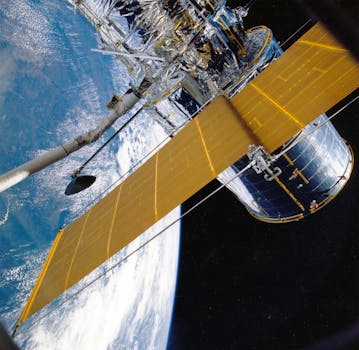Beyond Earth: How Recent Advances Are Shaping Satellite Telecommunications

Beyond Earth: How Recent Advances Are Shaping Satellite Telecommunications
Beyond Earth: How Recent Advances Are Shaping Satellite Telecommunications. The concept of satellite telecommunications has been around for several decades, but recent advances in technology have transformed the industry, enabling faster, more reliable, and more accessible communication beyond Earth. In this article, we will explore the recent advances in satellite telecommunications and their impact on the industry.
Satellite telecommunications involve the use of satellites in orbit around the Earth to transmit and receive data, voice, and video signals. The first commercial satellite, Intelsat 1, was launched in 1965, and since then, the industry has grown rapidly, with thousands of satellites in orbit today. However, the early days of satellite telecommunications were marked by high costs, limited bandwidth, and poor signal quality. Recent advances in technology have addressed these challenges, making satellite communications more efficient, reliable, and accessible.
One of the significant recent advances in satellite telecommunications is the development of high-throughput satellites (HTS). HTS satellites use advanced technologies such as spot beams and frequency reuse to increase the amount of data that can be transmitted through a single satellite. This has led to a significant increase in bandwidth, making it possible to support more users and applications, such as broadband internet, video streaming, and mobile connectivity. For example, the ViaSat-1 satellite, launched in 2011, has a capacity of 140 Gbps, making it one of the highest-capacity satellites in the world.
Advances in Satellite Technology
Another recent advance in satellite telecommunications is the development of advanced satellite technologies such as phased arrays and digital signal processing. Phased arrays allow for the electronic steering of beams, enabling satellites to dynamically allocate capacity to different regions and applications. Digital signal processing enables the use of advanced modulation and coding techniques, such as LDPC and DVB-S2X, which improve the efficiency and reliability of satellite communications. These technologies have been used in recent satellite launches, such as the Intelsat 39 satellite, which features a phased array antenna and advanced digital signal processing.
In addition to these technological advances, there have been significant improvements in the manufacturing and launch of satellites. The use of 3D printing and other advanced manufacturing techniques has reduced the cost and time required to build satellites. The development of new launch vehicles, such as the SpaceX Falcon 9 and the Blue Origin New Glenn, has also reduced the cost of launching satellites into orbit. These advances have made it possible for new companies to enter the satellite telecommunications market, increasing competition and driving innovation.
Impact on the Industry
The recent advances in satellite telecommunications are having a significant impact on the industry. One of the most notable effects is the growth of satellite-based broadband internet services. Companies such as HughesNet and Exede Internet are using satellite technology to provide broadband internet services to underserved and remote communities. These services are also being used to support mobile connectivity, such as cellular backhaul and mobile broadband.
Satellite telecommunications are also being used to support a range of other applications, including video streaming, navigation, and remote sensing. The use of satellite technology is also enabling the development of new industries, such as space tourism and satellite-based Earth observation. For example, companies such as Planet Labs and DigitalGlobe are using satellite technology to provide high-resolution images of the Earth, which are being used for a range of applications, including agriculture, environmental monitoring, and disaster response.
Challenges and Opportunities
Despite the recent advances in satellite telecommunications, there are still several challenges that need to be addressed. One of the most significant challenges is the issue of spectrum allocation. The demand for satellite spectrum is increasing, driven by the growth of satellite-based broadband internet services and other applications. However, the allocation of spectrum is a complex process, involving international cooperation and regulation. The development of new satellite technologies, such as HTS and phased arrays, is also creating new challenges, such as the need for more advanced ground equipment and the potential for interference between different satellite systems.
Despite these challenges, the recent advances in satellite telecommunications are creating new opportunities for the industry. The growth of satellite-based broadband internet services is expected to continue, driven by the increasing demand for connectivity in underserved and remote communities. The use of satellite technology is also enabling the development of new industries, such as space tourism and satellite-based Earth observation. The development of new satellite technologies, such as HTS and phased arrays, is also creating new opportunities for innovation and investment in the industry.




